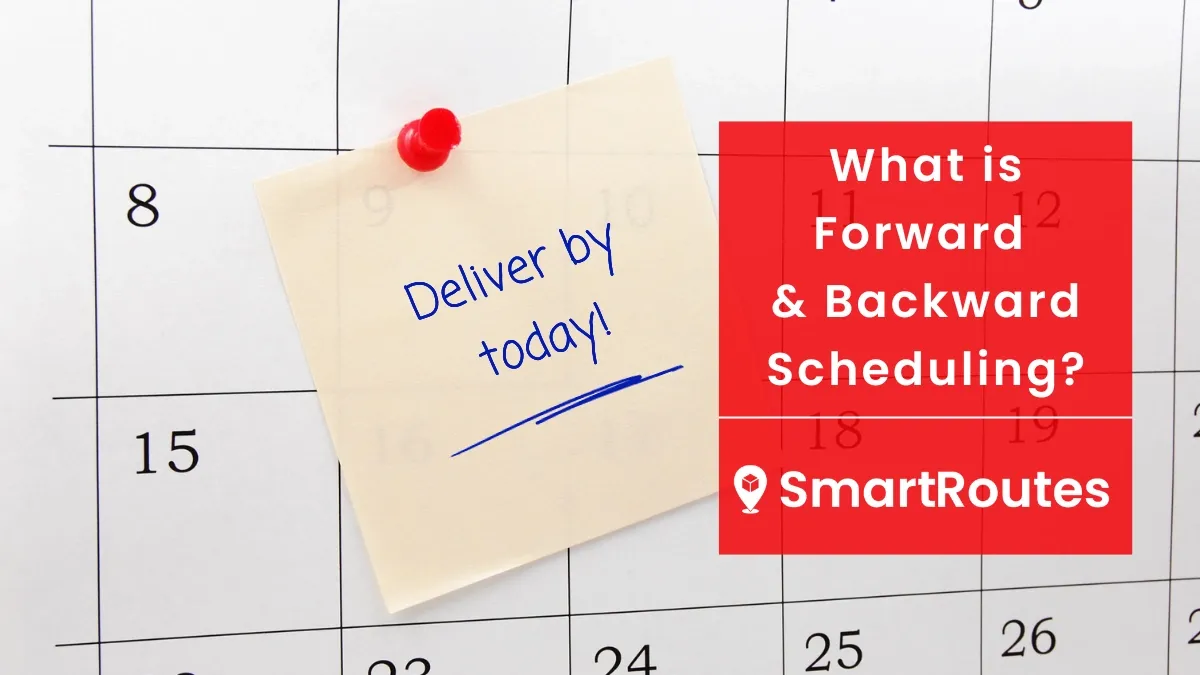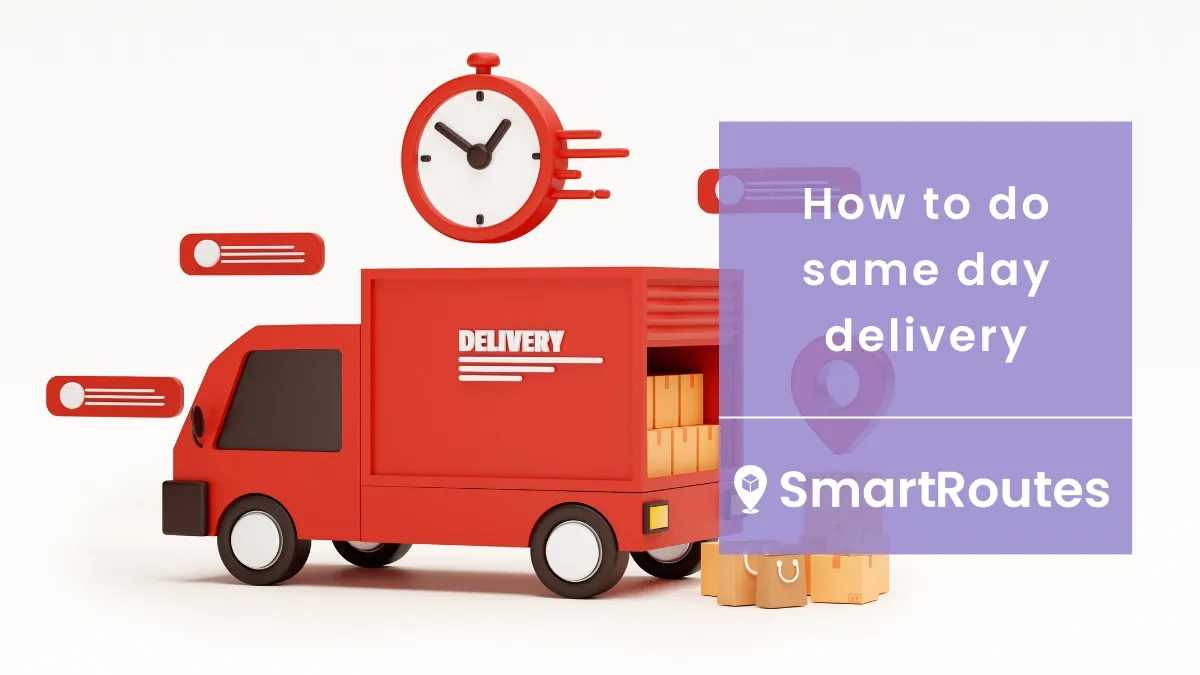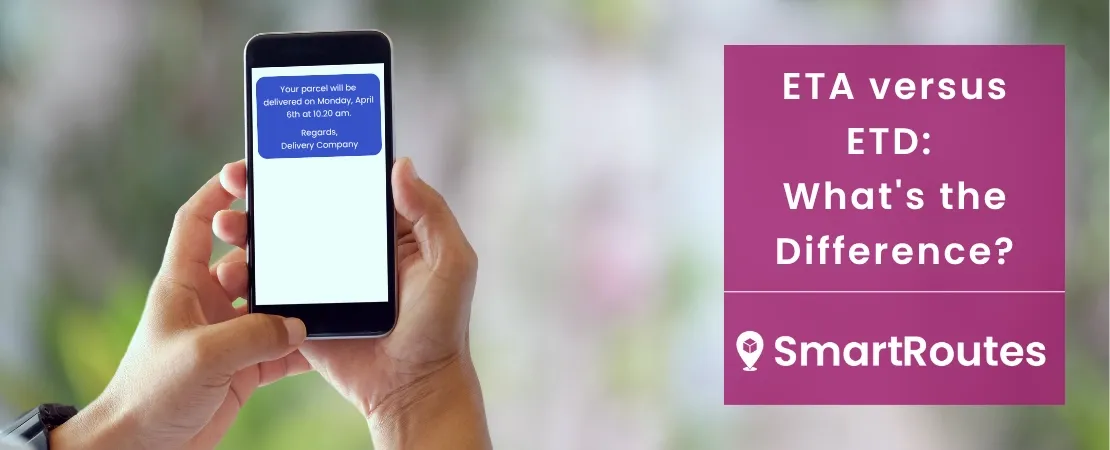ETA meaning
"What's the ETA on that?".....Let’s face it none of us especially like waiting for things. But knowing how long we can expect to wait can make the experience a whole lot better.
That’s why communicating your plans to your paying customers is critical to the success of your business. By accurately estimating your arrival or delivery time, you can give your business, your employees, and your customers an easier life and a better experience. Delivery route planning, in fact, is built on being able to accurately predict and communicate ETDs to customers.
We take you through the in’s and out’s of ETAs and ETDs below and provide useful hints and tips to get your own solution in place.
What is ETA [expected time of arrival] and why does it matter?
When we talk about estimated time of arrival, we refer to the time and date that a shipment is expected to arrive at a particular destination. Although the specific location can vary from case to case, it is generally a seaport or airport. However, the most common place you will hear an ETA referred to is when a passenger plane is expected to land at an airport.
This is the easiest way to remember that ETA refers to the airports and seaports. In the vast majority of cases, the shipping method will be via air, sea or domestic shipping services such as rail or road.
SmartRoutes Route Planning Software
Streamline your entire delivery process, all from one platform

What does estimated delivery mean?
Estimated time of delivery is the time and date that an order or shipment is due to be delivered at its final destination. This plays a key role in the success of last mile delivery (the last journey a package makes in the supply chain). The ETD is usually calculated by the last mile carrier in order to ensure successful delivery of goods and avoid any issues with completing delivery due to absent consignees or issues at the drop location (like a blocked road, or building works etc.
The ETD is also flexible, and can be updated to account for any delays in the transit of goods to the consignee.
The key difference between ETA & ETD
As outlined above, the key difference between estimated time of arrival and estimated time of delivery, is that ETA’s refer to the arrival of a consignment at a seaport or airport, while ETD’s refer to the delivery of a consignment at its final destination (i.e. with the end-customer).
ETA’s are usually fixed, whilst ETD’s can be more flexible and updated.
Checklist for your business to see if you need accurate ETD forecasting
Every business that is involved in deliveries to customers should be thinking of ETD and whether it is a necessary element in their delivery operation. Here are a few things that you can check to see if ETD is something to work on in the future.
- Do your customers typically get in touch to see when packages are due to arrive?
- Do you have missed deliveries as a result of customers not being there to receive and sign for a package?
- Do you have time-sensitive or perishable goods being delivered?
- Do failed deliveries cost your business money in terms of re-delivery or storage costs until they are collected?
- Do your delivery staff have to increase the time window at a delivery site waiting for a receiving agent?
How can I inform customers of their estimated time of delivery?
For readers of the SmartRoutes blog, it’s likely that you’re more interested in the last mile of delivery as opposed to the first mile. For that reason, we’ll take a look at how you can keep your consignees (usually customers) informed of the estimated time of delivery for goods delivered by road in the last mile.
There are 3 key ways of communicating ETD’s to your customers
1. Phone Call
Once your route planning has been done and you have estimated the time you will serve each drop, you may opt to call the customer to inform them of the time you plan to make the delivery.
It’s a simple and effective way of advising your customers of delivery, but it is manual and labor-intensive.
Certainly not the best way, but it may work if your volume of deliveries is small and customers are repeat and known to you.
2. Email
Emailing your customer with the planned ETD for their package can be effective. Emails are free, and can be automated through a comprehensive delivery management software system. The added benefit over a phone call is that they do not take any additional time of you or your staff, and it can also serve as proof that you informed the customer of the planned ETD beforehand.
**SmartRoutes Delivery Management System allows you the ability to send ETD notifications to customers via automated email**
3. SMS
SMS messages can be a great way of informing your customers of the planned ETD for their deliveries and especially if it is a contactless delivery.
Almost everyone now carries a phone of some sort in their pocket, and instant notification via a SMS message can be the most effective way of ensuring they are prepared to receive the delivery.
It has the slight advantage over email, as it is instant and less likely to be missed by the consignee.
At SmartRoutes, we have analyzed the data and we have found that clients who use personalized, automated SMS notifications have a first-time delivery success rate of over 95%.
Although they can have a nominal cost compared to free emails, it can be a gamechanger for delivery experience that your business provides. As companies like Amazon and UPS up their delivery game, this can be a great value add that helps your business keep the upper-hand on service levels.
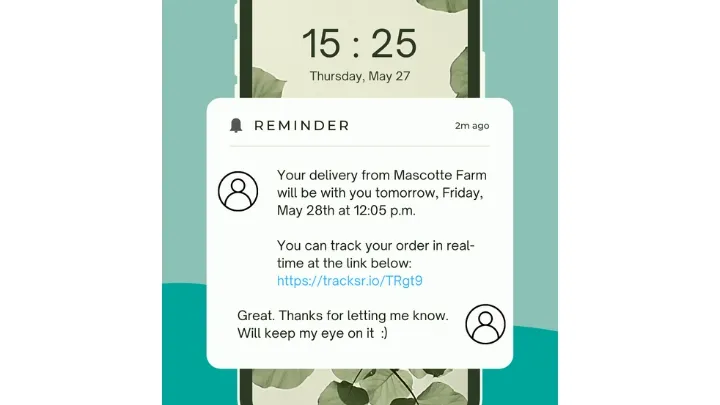
What are the advantages of providing consignees/customers with ETD's?
Great customer service
That ‘delivery experience’ we just mentioned is the key for businesses wanting to make a success of their delivery service. Without happy customers, a businesses long-term outlook will not be a good one
Getting customers excited about the arrival of their purchase and delivering it as promised leaves them satisfied and more likely to become a repeat customer and refer you to a friend.
Giving them an ETD in advance shows that you care about their time.
Smooth and efficient operation of your business
Giving your customer a forecast of when their order will arrive is actually as important to you as it is to them.
By providing consignees with accurate ETD in advance, it gives them a chance to make themselves available to receive the goods. This means that deliveries aren’t missed, drivers don't waste time waiting around for someone that isn’t there, and you save on the cost of re-routing the delivery on another run.
This results in happier drivers and customers too, which eliminates time spent dealing with issues that shouldn’t exist.
How SmartRoutes can help you with estimated time of arrival
We focus on providing our customers with extremely accurate forecasting for delivery schedules and completion times. In fact, implementing SmartRoutes is a game-changer for most businesses in terms of improving the delivery experience for customers. Here is how we can help you:
Route planning and optimization to help with ETA
SmartRoutes is a delivery management system that can help with communicating ETD's directly to customers.
The system works by taking bulk uploads of orders, and then finding the most efficient way to serve each stop on the route. Each stop is also assigned an estimated time of delivery based on the calculations. This is then sent directly to customers via SMS or email.
More on that below.
Customer notifications of ETD
For many of our customers, this is the game changer. In fact, when combined with a live vehicle tracking dashboard that allows you to see where drivers and vehicles are in real-time, our customers report an average decrease of 70% in customer queries about their deliveries.
Customer notifications are sent automatically once routes are created for your drivers and the ETD is included within the body of the message. It can be a nice touch from your company, and show that you are on your game.
The flexibility of using either SMS or email also gives you a solution that's a perfect fit for your specific delivery operation.
Live package tracking
Communicating the ETD to your customers in advance of delivery is the key to allowing your customers to prepare and makes themselves available to receive the package.
But ETD's aren't an exact science.
Traffic, extra time spent at some locations, and re-routed orders mean that ETD's are constantly in flux.
That's why we have developed a delivery live tracking portal that allows customers to see exactly where their delivery is in real-time by simply clicking on a custom/personal URL.
It's an added bonus to ETD email and SMS notifications, and can be really impressive from a business point of view too with custom branding.
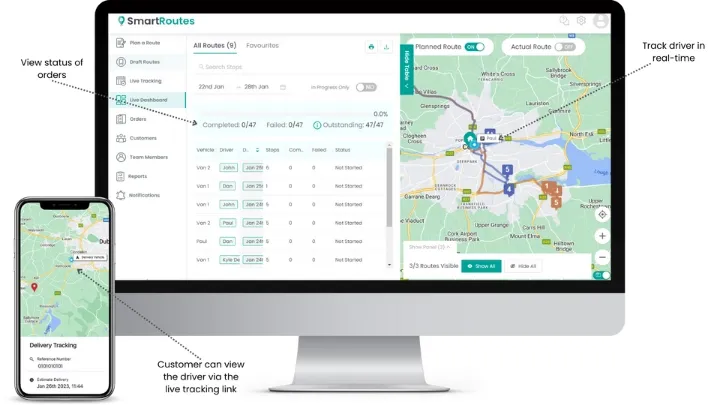
Summary
No matter what you’re delivering, keeping consignees in the loop about the arrival of their goods or services is good practice. It helps with everything from customer experience to the smooth operation of your own business. Fleet tracking software facilitates this by using GPS tech to track where each of your vehicles is in real-time.
With organizations like UPS, Fedex and Amazon leading the way in deliveries, having a process and supplementary solution for conveying accurate ETA’s and ETD’s to your customers can pay off in the long run.
If you are looking for a way to keep your customers informed of ETA’s or ETD’s, you can try a 7-day free trial of SmartRoutes.
FAQ
1. What is ETA (Estimated Time of Arrival) in shipping terms?
ETA, or Estimated Time of Arrival, is a crucial logistics term referring to the predicted time when a shipment, vehicle, or cargo is expected to reach its destination or a specific checkpoint within a transportation route. It's calculated based on various factors such as distance, speed, route conditions, and potential delays. ETA provides valuable information to stakeholders involved in logistics, allowing them to plan, track, and coordinate shipments efficiently.
2. What is ETD (Estimated Time of Delivery) in logistics?
ETD, or Estimated Time of Delivery, is another vital logistics concept. It represents the anticipated time when a shipment will be delivered to its final destination, typically to the recipient or consignee. ETD considers factors beyond transportation time, including processing at distribution centers, customs clearance (for international shipments), and any additional handling required. It helps logistics professionals and customers prepare for the arrival of goods.
3. Why is knowing the difference between ETA and ETD important for supply chain management?
Distinguishing between ETA and ETD is crucial in supply chain management because it affects planning and decision-making. ETA focuses on when a shipment will arrive at specific points along its route, enabling efficient scheduling of resources and reducing idle time. ETD, on the other hand, provides insights into when the final delivery will occur, allowing recipients to prepare for the receipt of goods. Accurate ETA and ETD predictions help minimize inventory costs, reduce delays, improve customer service, and enhance overall supply chain efficiency.
4. What are some common challenges in achieving accurate ETA and ETD predictions?
Achieving precise ETA and ETD predictions can be challenging due to several factors: Unforeseen traffic congestion, accidents, and adverse weather conditions can disrupt schedules. Inaccurate data sources or outdated information can lead to incorrect predictions. Multi-modal transportation involving various carriers can introduce complexities in coordination. For international shipments, delays during customs clearance and border crossings are common challenges. Mechanical failures or technical issues with vehicles can impact timelines.
If you enjoyed this blog, you might also be interested in:
